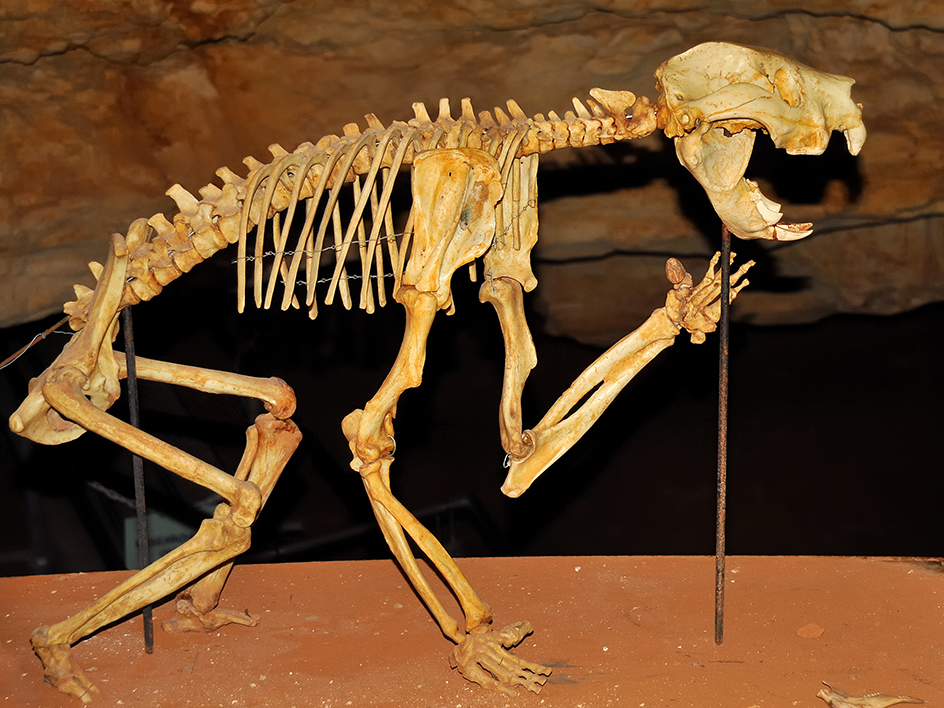Marsupial lion was the largest meat-eating mammal ever to live in Australia. The largest known marsupial lion weighed about 360 pounds (160 kilograms). This species (kind) first appeared about 1 million to 2 million years ago. It became extinct within the last 100,000 years. The marsupial lion belonged to a group of animals that also are known as marsupial lions. All members of this group are extinct.


The marsupial lion was about the size of a modern female lion. It stood about 30 inches (75 centimeters) tall at the shoulder. It reached about 60 inches (150 centimeters) long, including the tail. Adults generally weighed from 220 to 290 pounds (100 to 130 kilograms).
The marsupial lion hunted such large prehistoric prey as the giant wombat and the giant kangaroo. It had one of the most powerful bites for its size of any known mammal. The marsupial lion had a sturdy skeleton, powerful legs, and sharp claws. It probably did not run fast. Instead, the marsupial lion likely ambushed prey, possibly dropping down upon it from trees.
The marsupial lion was not closely related to modern lions. Instead, it was a marsupial—that is, a mammal that gives birth to tiny, undeveloped young. After birth, these young make their way to the mother’s pouch, where they feed on milk the mother produces. The modern lion is a placental—that is, it gives birth to well-developed young. A female lion does not have a pouch.
The marsupial lion became extinct within the last 100,000 years, as did many other large animals in Australia. Scientists do not agree on the causes of these extinctions. Some argue that humans were responsible through hunting, habitat destruction, or both. Others maintain that most species were gone before humans arrived in Australia, probably more than 65,000 years ago. They argue that the extinctions may be related to long-term climate change. It is likely that a number of factors played a role in the extinctions.
